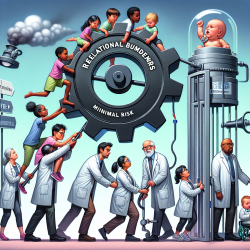Streamline Safety: Implementing an Automated Health Attestation System
In the wake of the COVID-19 pandemic, organizations across various sectors, including education and healthcare, have faced unprecedented challenges. Ensuring the safety of both employees and clients while maintaining legal compliance has become a top priority. The research article, "Creating an Automated Health Attestation System During the COVID-19 Pandemic with Microsoft 365," provides a comprehensive guide to developing a health attestation system that can help mitigate these challenges.
Why Implement a Health Attestation System?
Health attestation systems serve as a crucial tool in identifying and isolating individuals who may have been exposed to COVID-19. By requiring individuals to self-report their health status and exposure, organizations can reduce the spread of the virus and protect their workforce and clientele. Furthermore, these systems help organizations mitigate legal liabilities by documenting compliance with health and safety protocols.
Leveraging Microsoft 365 for Automation
The research outlines a step-by-step process for creating an automated health attestation system using Microsoft 365 applications, such as Microsoft Forms and Power Automate. This system allows organizations to:
- Create and distribute health attestation forms using Microsoft Forms.
- Automate email reminders to ensure timely completion of the forms.
- Receive notifications of potential COVID-19 exposure or non-compliance.
Steps to Implementation
Here’s a simplified overview of the steps involved in setting up the system:
- Create a Health Attestation Form: Use Microsoft Forms to develop a questionnaire that captures necessary health and exposure information.
- Automate Reminders: Utilize Microsoft Power Automate to schedule and send email reminders to individuals who need to complete the form.
- Set Up Notifications: Configure the system to alert administrators when a form indicates potential exposure or refusal to comply with policies.
Benefits and Considerations
Implementing an automated health attestation system offers several benefits:
- Increased Safety: By identifying potential exposures early, organizations can take preventive measures to protect their community.
- Legal Protection: Documenting compliance with health protocols can reduce legal risks.
- Efficiency: Automation reduces the administrative burden of manually tracking health attestations.
However, organizations should be mindful of potential challenges, such as ensuring all participants have access to the necessary technology and providing adequate training on form completion. Additionally, the accuracy of self-reported information may vary, and organizations should develop policies to address this risk.
Encouraging Further Research
While the system outlined in the research provides a robust framework, further research is encouraged to explore additional functionalities and alternative software solutions. For instance, organizations without access to Microsoft 365 might consider using Google's G Suite or other open-source platforms to develop similar systems.
To read the original research paper, please follow this link: Creating an Automated Health Attestation System During the COVID-19 Pandemic with Microsoft 365.










